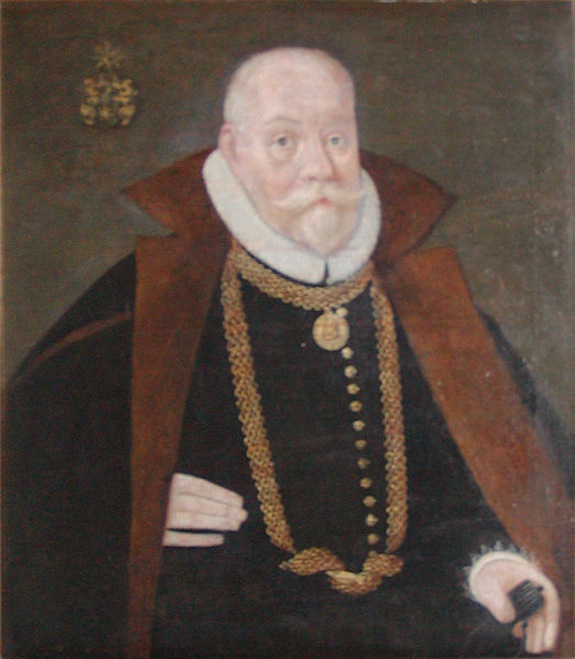Tycho Brahe Probably Wasn’t Murdered, But These People Were
Here are some quite odd cases in which the people were probably murdered

Tycho Brahe. Image: Museum of National History at Frederiksborg Castle
The story of Tycho Brahe is a weird one: it includes events like losing his nose in a duel over a mathematical formula, replacing it with a golden one and having a pet moose who died after getting drunk and falling down some stairs. Brahe’s death was sensational, as well—researchers found extremely high levels of mercury in his mustache hairs, suggesting he had been poisoned. Or perhaps not. A new analysis of the body, exhumed in 2010 to settle the matter, suggests that Brahe was not murdered at all. The BBC writes:
“It is impossible that Tycho Brahe could have been murdered,” explained. When asked whether other poisons could have been used, Dr Vellev said: “If there were other poisons in the beard, we would have been able to see it in the analyses.
But if you love potentially murdered eccentric people, never fear. Here are some quite odd cases in which the people were probably murdered:
Regiomontanus: Also known as Johannes Müller von Königsberg, this mathematician lived in the mid 15th century. He became a university student at the age of 11 and got a Master of Arts at 21. He was the first to write a book using symbolic algebra, and a crater on the moon is named after him. In 1476, he went to Rome, never to return. Many believe he was assassinated.
Ottavio Bottecchia: Winner of the 1924 and 1925 Tour de France, Bottecchia was one of the greatest cyclers of the early 20th century. But when he returned to the race in 1926, he was in bad shape and performed quite poorly. Just a few months later, while training alone near his home, Bottecchia was found beaten and bloody on the side of the road. His bicycle, however, was intact, and propped up against a tree nearby. Cycling Revealed explains the three possible explanations:
- The Police Report : “death due to a freak accident.” The investigating officer, under the watchful eye of the local Fascists, stated that Bottecchia had trouble freeing his feet from the strapped toe clips on the pedals after a large drink of water. He lost his balance and fell, striking his head on a sharp rock.
- Theory Number 1 : …Bottecchia was hungry and stopped for a snack at a local vineyard. The owner of the vineyard spotted him stealing the grapes and confronted Bottecchia. The argument grew violent and the furious owner threw a rock, striking Bottecchia on the head.
- Theory Number 2 : The iron-fisted Fascists, who were angry at Bottecchia’s success and his failure to fully support the Fascist Party, had him killed. At the hospital, the attending physician diagnosed the injury as a fracture at the base of the skull, broken clavicle, and a large number of bruises.
This last theory has the most proof: twenty years later, an American immigrant confessed on his deathbed that the Fascists had contracted him to kill the cyclist, and, in 1973, a priest who issued Bottecchia his last rights also claimed this theory was accurate, according to Cycling Revealed.
The Dyaltov Pass hikers: In 1959, nine skiers were found dead in the Ural Mountains. The victims had fractured skulls and broken ribs. One had her tongue cut out. All their clothing was highly radioactive. At their funeral, people noted that their skin was noticeably tan. To this day, no one knows who or what killed them. One theory, according to the St. Petersburg Times was that the local Mansi people had murdered the skiers for trespassing. But that didn’t explain the radioactivity, and the wounds they sustained were far beyond a human’s strength, said the doctor:
Further debunking the theory, a doctor who examined the bodies in 1959 said he believed that no man could have inflicted the injuries because the force of the blows had been too strong and no soft tissue had been damaged,
“It was equal to the effect of a car crash,” said the doctor, Boris Vozrozhdenny, according to case documents.
Another theory was some sort of explosion. This would explain their tanned faces, the radioactivity, and the force of the wounds. But there was no sign of an explosion or missiles in that area at all.
Jimmy Hoffa: A notorious labor union leader and strong-arm, Hoffa had a lot of enemies. Which is why when he disappeared from the parking lot of the Machus Red Fox Restaurant in Detroit in 1975 everyone assumed he’d been offed. The question is: who did it? And, perhaps more interestingly, where did they put the body? To this day, no one has discovered Hoffa’s remains, and his disappearance remains a mystery. In 2009, mafia hit man Richard Kuklinski claimed that he had offed the Hoff in the book “The Iceman: Confessions of a Mafia Contract Killer” written by Philip Carlo. Weird NJ writes:
Carlo claims that after killing Hoffa with a combo blackjack/hunting knife to the head and packing him into a handy body bag, Kuklinski drove to a Kearny, New Jersey junkyard, where he engaged in a bit of overkill to dispose of the body, eventually storing it in a car that would become scrap metal. According to many media accounts, including a story about the book in the April 17 edition of the Bergen Record, the claim has been dismissed as a hoax.
More from Smithsonian.com:
Meriwether Lewis’ Mysterious Death
The Mysterious Death of Robert Kennicott
/https://tf-cmsv2-smithsonianmag-media.s3.amazonaws.com/accounts/headshot/Rose-Eveleth-240.jpg)
/https://tf-cmsv2-smithsonianmag-media.s3.amazonaws.com/accounts/headshot/Rose-Eveleth-240.jpg)